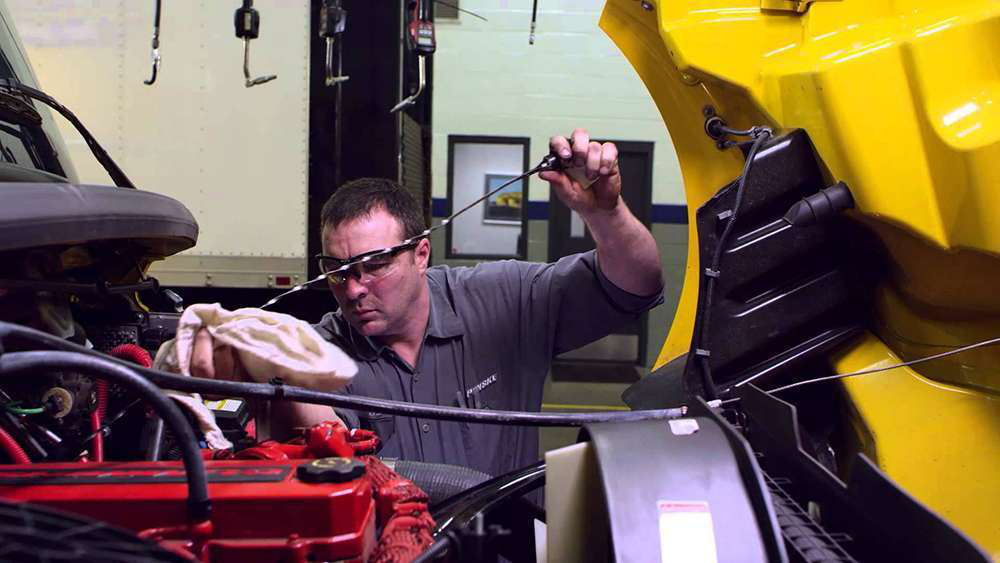Predictive maintenance

Intelligent predictive maintenance is what Bill Combs, director of connected fleets for Penske Truck Leasing, calls ‘the ultimate goal.’
When a truck throws a fault code, it’s too late.
The code only displays when there’s a problem that needs to be fixed, but today’s technology is marching slowly toward the kind of sophistication that can alert drivers and fleets to a problem before it’s ever actually an issue.
Ozark Motor Lines’ predominantly Freightliner fleet uses the OEM-standard Virtual Technician. The fleet also has partnered with tech startup PreTeckt to develop a prognostics platform capable of sending alerts before a fault occurs.
“I’ve always fussed and said ‘I don’t need 15 different systems on my truck,’ but [PreTeckt is] looking to try and tell you ahead of time that the light’s fixing to come on, that something’s happening inside that’s going to trip it so we can plan ahead of time,” says Glen McDonald, Ozark’s director of maintenance.
PreTeckt connects to the truck’s diagnostics port and automatically configures the truck to the network. Dewey Bishop, Ozark’s technician trainer, says the company currently is testing the platform on 30 of the carrier’s units and that he communicates with PreTeckt every few weeks as the group works to refine the system. “It looks really promising,” Bishop says.
“For example, if a doser nozzle starts to stop up in one of our trucks, the fuel pressure increases. If I can log in and look at the fuel pressure on another truck at any given moment, when I see it starting to increase, then I know a problem is about to happen.”
— Dewey Bishop, Ozark Motor Lines technician trainer
PreTeckt’s networked service continuously logs the truck’s sensors and sends alerts for anomalies that indicate early signs of failure. The potential to plan maintenance better is the prospect that most excites Bishop.
“With [standard diagnostics], the problem has already happened and lets you know after the fact,” he says. “You can try and arrange for service, but you’re very limited most of the time – 300 or 400 miles is about the best you can do once the problem already happens. If we can identify a week or two ahead of time along the truck’s daily route, we can schedule through the shop and have it repaired before the problem ever begins.”
McDonald says Ozark tries to perform all maintenance in-house and that using a nonproprietary provider allows the flexibility to better plan and route repair services.
“We want to discover it before it happens and route it to one of our shops and not have to limp him in,” he says.
The PreTeckt platform is self-learning so that when one truck on the network experiences a maintenance issue, it communicates with the rest of the trucks to recognize the symptoms that could predict a similar failure.
Bishop’s shops most often see high volumes of similar issues because they’re running 700 of the same trucks, and PreTeckt’s real-time data insights that allow Bishop to log in and see various operating data from any truck play a key role in preventing breakdowns.
“For example, if a doser nozzle starts to stop up in one of our trucks, the fuel pressure increases,” he says. “If I can log in and look at the fuel pressure on another truck at any given moment, when I see it starting to increase, then I know a problem is about to happen.”
That level of predictive maintenance is what Bill Combs, director of connected fleets for Penske Truck Leasing, calls “the ultimate goal.”
“When the truck can tell us there’s an issue, the driver may not have seen a light on the dash, and it’s possible there’s not even a light on the dash yet, but we’re getting data telling us that vehicle is in trouble,” he says. “Then we can proactively reach out to the customer, and our customer can work with us in figuring out how we can deal with that issue.”
